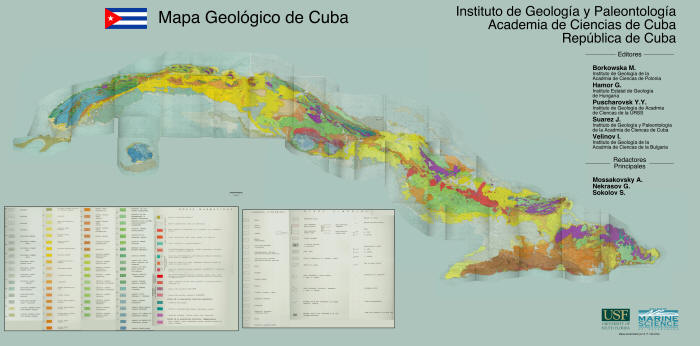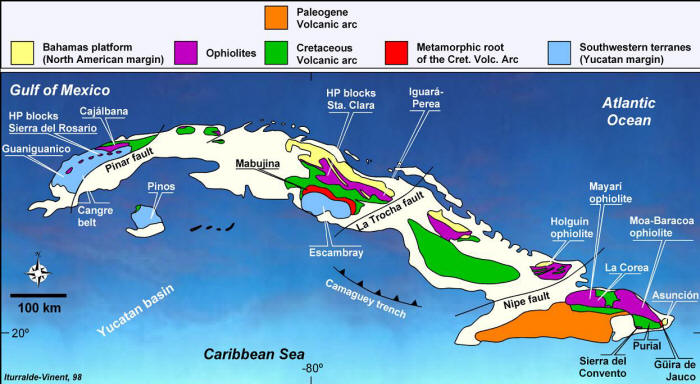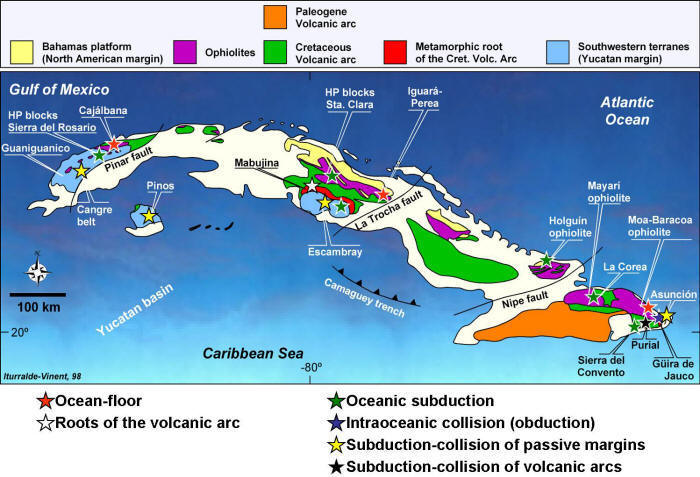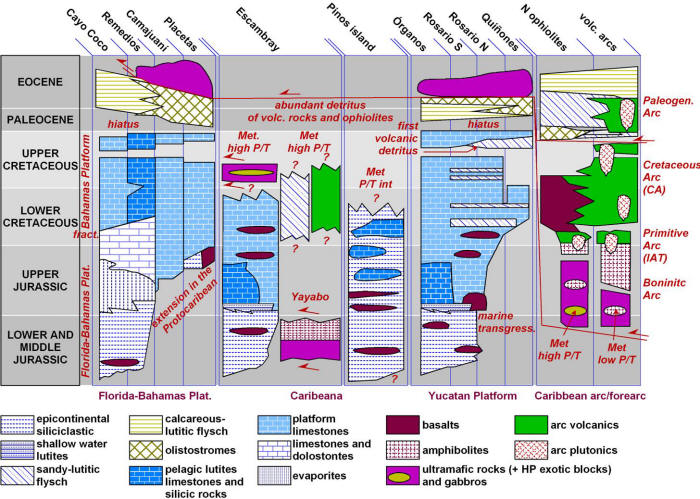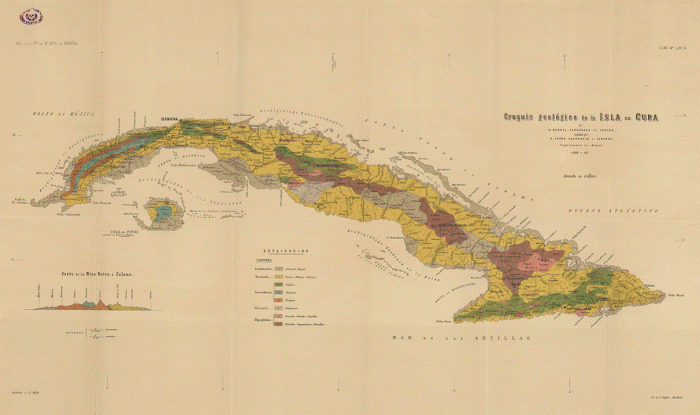
An early Geological Map of Cuba,
by Manuel Fernández de Castro and Pedro Salterain y Legarra (1869-1883, CROQUIS
GEOLOGICO DE LA ISLA DE CUBA. 1:2.000.000. COMISION DEL MAPA GEOLOGICO DE ESPAÑA,
1883, MADRID. BOLETIN DE LA COMISION DEL MAPA GEOLOGICO DE ESPAÑA; TOMO 8º, LAM.
G).
Image source (Instituto Geológico y Minero de España):
http://www.igme.es/internet/sistemas_infor/biblioteca/i_default.asp
http://www.igme.es/internet/sistemas_infor/FondoCartografico/FondoCartoInicio.asp
http://www.igme.es/internet/sistemas_infor/FondoCartografico/CartoIgme.asp?Fichero=http://www.igme.es/internet/sistemas_infor/FondoCartograficoIMG/Cuba1869-1883_I5-8-77.jpg&Titulo=CROQUIS%20GEOLOGICO%20DE%20LA%20ISLA%20DE%20CUBA.%201869-83
(see also: Manuel Fernández de Castro, 1881.
Pruebas paleontológicas de que la Isla de
Cuba ha estado unida al continente americano y breve idea de su
constitución geológica. Boletín de la Comisión del Mapa Geológico de España,
tomo 8, 357-372).
Based on mammalian fossils, Fernández de Castro (1881) showed that Cuba was once linked to the American Continent in the past.


